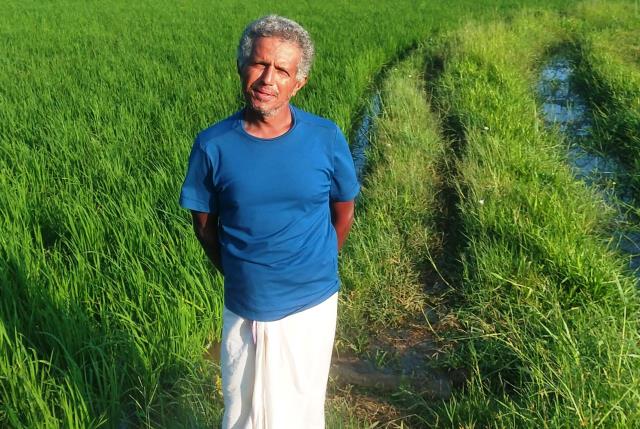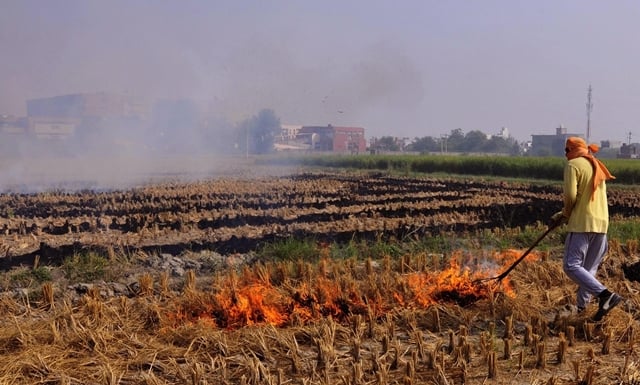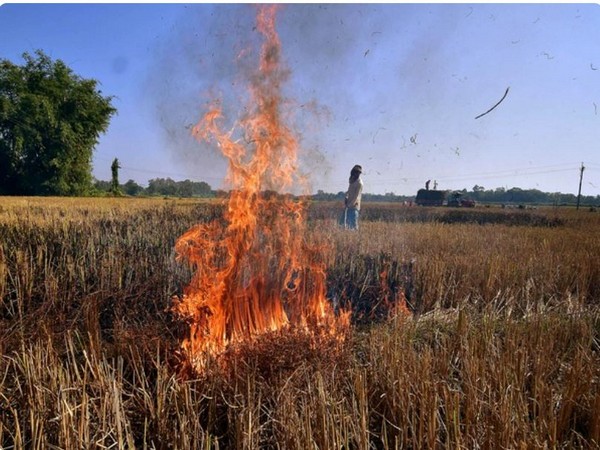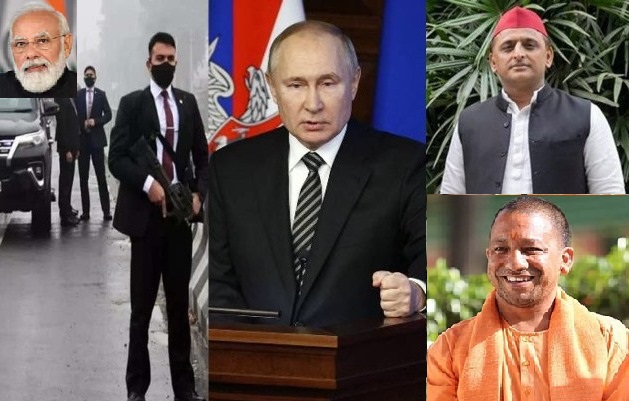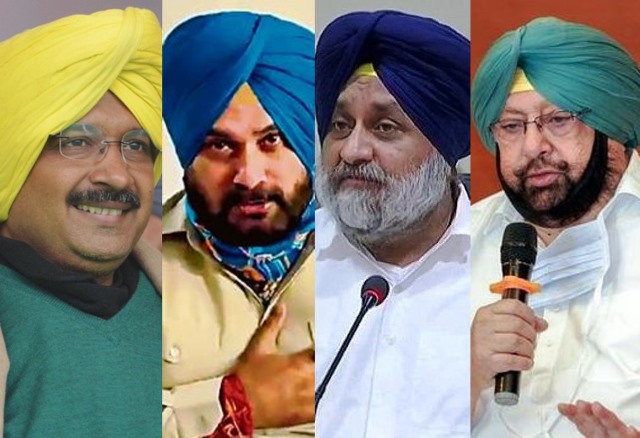Prime Minister Modi’s attempt to do a flyover visit in Punjab and get stuck over a flyover is a skit for satire if it wasn’t for real. The repercussions are still going around the social media with all sorts of threats, counter threats and allegations. The Prime Minister himself, who no doubt could easily get a job in Bollywood were he to lose his current role as ‘leader of India’, was as dramatic as ever.
‘Tell the CM I made it live to the airport’. Precisely who was threatening him is also a mystery. ISI? ISI don’t know what to do with a target if it was standing in front of them. They only work through ‘underground agents’ after coasting the target over weeks, if not months. ISI likes ‘clever’ games. It is a habit. Besides, that would have led to a war and ISI, for all its anti-India activities, isn’t quite ready for a war. Let us rule ISI out.
Sikhs? Why would Sikhs want to kill him? They just won the farmer protest having damaged him beyond repair. Modi is like a dead man walking in Punjab. Punjabis don’t respect losers. He lost and no point on inflicting more on him. His very presence is their victory. Some farmers simply obstructed his path and told him ‘Delhi wapas ja Bharava’ Go back to Delhi brother.
A Congress wallah? The Congress only kills people through the police and Army. They did enough in the 1980s and 1990s. They don’t do Jhatka, i.e do the work themselves.
It seems the only people threatening the beloved Modiji were Modi Bhakts. There was a bus load who were suddenly elated that they came almost face to face with their god and collectively said several times. ’Modi ji ki Jai’.
Modi ji, who doesn’t even give press interviews or face people directly and only speaks at big rallies through a bullet proof glass wall, was suddenly physically confronted by the sight of his worshippers in close proximity. He was obviously unnerved. This was a new situation for him since becoming PM. They are meant to be behind ropes and barriers, clamouring to touch his feet, not two yards away on a flyover. He misread their adulation as threats.
But what was Modiji doing in Punjab? After the protests ended in November, there were no hugs or stuffing laddoos in each other’s mouths. He took back laws. The Punjabis are still suspicious. A committee has been formed. But he decided to go over to Punjab. He probably thought to say, ‘No hard feelings’. The farmers probably thought he has come over to show that he is still Boss.
For a seasoned politician, it seemed a bit naïve to think that he could go over to Punjab and be greeted with garlands. The protestors had occupied several roads to stop any Modi Bhakts to get to the ground where he was going to speak. But they got lucky and managed to stop Modiji himself from getting to the ground, which was going to be mostly empty anyway.
For a ‘helicopter’ PM who flies everywhere, travelling on an Indian Road must have been an experience itself. And then getting caught over an India made flyover with no opportunity for a helicopter to ‘save’ him from his Bhakts, must have been another nightmare.
Instead of complaining about the hapless Punjab Chief Minister who had made all arrangements for Modiji to get to his empty ground by helicopter, Modiji needs to haul his transport minister and order him to build better flyovers. Flyovers where a helicopter can land and whisk the dear leader off, away, from his fans. Meanwhile his statement, ‘Buch je agya hun’ (I have come back safely), is causing roars of amusement in Punjab, further denting his muscular profile. ‘Kis se Buch ke ayaa hae bhai’ (who did you save yourself from? Who was threatening you?)
Putin’s Khrushchev moment
Putin has gone into a high stakes poker game with the United States. Having amassed some 100,000 troops and heavy equipment on the borders of Ukraine, Putin is threatening war unless US gives assurance that there will be no deployment of NATO forces in Ukraine and Ukraine won’t be permitted to join EU. Biden and EU are so far refusing. Putin is said to be threatening to install missiles again in Cuba.
This is a rerun of the 1962 Cuban crises. The head of the Soviet, Nikita Khrushchev, decided to install missiles in Cuba, an independent Island country only some 80 miles from Florida, US coast. The US under Kennedy, circled the Island with its Navy and blocked further supplies. A threat of war was looming. The Soviet (now Russia) wanted US to remove its missiles from Turkey in return. The standoff lasted about a month. The Soviet took away its gear. Khrushchev lost face in the Soviet and had to resign for showing ‘weakness’.
Strongman Putin now faces the same dilemma. He started a political poker which will only conclude with him or Biden losing face. For some time Ukraine has been seen as a possible NATO army base. Ukraine has also been openly saying that it will join the EU if permitted. Both are seen as evidence of Russia’s loss of power in that region.
Putin took over the Crimea in 2014 and part of Eastern Ukraine (Donbas) in some swift moves. The Eastern Ukraine is not strictly in Russia but is de facto Russian territory. Putin decided to threaten war and take over Ukraine if it doesn’t give up attempts to join EU and have NATO base. A NATO base is seen as a threat too near Russian border.
Treating Ukraine as a puppet of America, Putin is dealing directly with the US and NATO rather than Ukraine. Putin has said that the situation is similar to the Cuban crises of 1962.
Both US and NATO are refusing to budge citing Ukraine’s sovereign right to chose what it wants. As days go by it seems Putin may have little choice but to either backdown or invade. The west is trying to call Putin’s bluff, trying to see how far it can push Putin’s tolerance.
Sooner or later, Putin will have to chose if there is no movement on the discussions. If he deploys missiles in Cuba, that might be seen as too provocative. If he invades Ukraine it will be very costly for both countries. The economic crises that Russia will face afterwards will weaken him. If he backs down, Putin will be weakened as a political strongman in Russia. Either way, he has problems.
If Putin attacks Ukraine, Biden will face a barrage of criticism in USA from the Republicans. It will distract from the enquiry into the attempted insurrection of Capitol Hill. It will be the second country Biden administration will have failed to live up to a promise of protection (Afghanistan).
All indications are that this is leading to a war barring a last minute diplomatic breakthrough in the talks.
The Political Petri Dish
Look down a petri dish under a microscope and one will see bacteria or other organisms wandering around aimlessly from one end to another. Politics in India seems similar. With no clear agendas except caste, communalism or unachievable promises, the parties have little to differentiate between themselves.
So politicians often see parties as career ladders rather than organisations of conviction and loyalty. So it is in UP. A number of BJP MLAs have defected to Akhilesh Yadav’s Samajwadi Party. They say that BJP is only interested in working for the big corporate houses and not representing the backward castes or the poor. The BJP in turn is trying hard to woo the backward castes.
So like a petri dish culture, the politicians are crossing from one side to another. So far Dara Singh Chauhan, Swami Prasad Muarya and Dharam Singh Saini and a few others have crossed over from Adityanath’s BJP to Akhilesh’s SP. Dara Singh was in Adityanath’s cabinet.
Soon no one will know which party any candidate is in and what he or she stands for until the morning of the upcoming elections. At least that day the election commission forbids any statements so no point in political promiscuity on election day.

